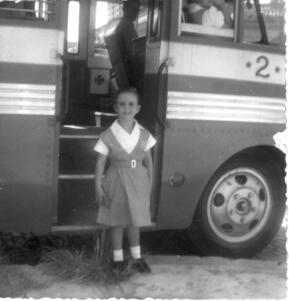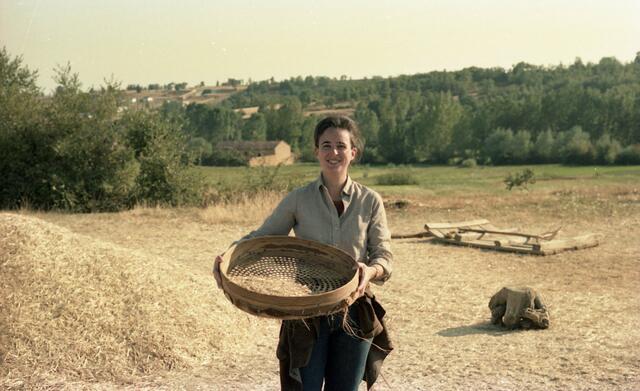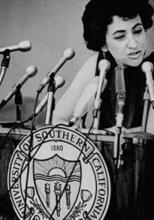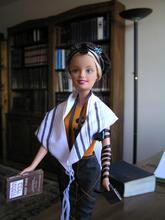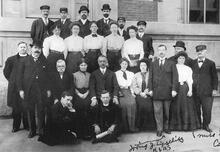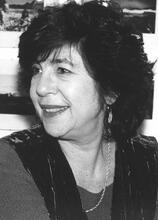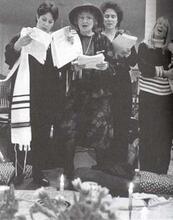Ruth Behar
Acclaimed cultural anthropologist, essayist, poet, novelist, and filmmaker Ruth Behar, who was born in Havana, Cuba, is the Victor Haim Perera Collegiate Professor of Anthropology at the University of Michigan. Behar’s research has taken her to Spain and Mexico, as well as back to Cuba. The first Latina to win the MacArthur Foundation’s “Genius” Award, Behar has been widely recognized for her innovations in writing and representation in cultural anthropology, in particular the idea of writing “vulnerably” by intertwining the personal and the ethnographic. Although her research and writing tend towards themes of loss, memory, and an unceasing search for home, her writing is infused with hope and resilience. Beyond anthropology, Behar has reached a broad, non-academic audience through her film, poetry, personal essays, and young adult fiction.
Family and Education
Ruth Behar was born in Havana, Cuba, in 1956, to a Descendants of the Jews who lived in Spain and Portugal before the explusion of 1492; primarily Jews of N. Africa, Italy, the Middle East and the Balkans.Sephardi father and an Jews of European origin and their descendants, including most of North and South American Jewry.Ashkenazi mother, both born in Cuba to Turkish and Russian/Polish immigrants, respectively. As a small child, Behar attended the same Jewish day school in Havana that her mother had attended, where instruction was in Yiddish and Spanish. Following the 1959 Cuban Revolution and the expropriation of the family businesses (her maternal side owned a lace store and her paternal grandfather worked as a peddler), in 1961 her family was exiled again.
After spending a year on a A voluntary collective community, mainly agricultural, in which there is no private wealth and which is responsible for all the needs of its members and their families.kibbutz in Israel, the family settled in New York City, where Behar attended public schools, as well as Hebrew school in the afternoons. Her family attended synagogue on major Jewish holidays, including a few times at a Cuban Sephardic congregation. When she was nine years old, Behar and her family were in a catastrophic car accident that left her with a broken leg, requiring young Ruth to be confined to bed in a body cast for a year. Behar wrote about this experience in her essay “The Girl in the Cast,” published in her groundbreaking collection of essays, The Vulnerable Observer (1996); she later transformed the story into her Pura Belpré Award-winning young-adult novel, Lucky Broken Girl (2017).
Behar attended Wesleyan University, graduating cum laude with a BA in Letters in 1977. She pursued graduate studies in cultural anthropology at Princeton University, where she received her MA (1980) and PhD (1983) under the supervision of James W. Fernandez and Hildred Geertz. She has been a professor in the Department of Anthropology at the University of Michigan since 1989, and since 2010 has been the Victor Haim Perera Collegiate Professor of Anthropology (meaningfully, a chair named for another prominent Latin American Sephardic Jewish scholar and writer). Having abiding interdisciplinary sensibilities, Behar is also affiliated with Women's Studies, Latina/Latino Studies, Latin American and Caribbean Studies, and Judaic Studies at the University. She lives in Ann Arbor with her husband, anthropologist David Frye (m. 1982); they have one son, photographer, writer, and filmmaker Gabriel Frye-Behar.
Early Writing and Recognition: Interweaving the Personal and the Ethnographic
Both within and outside of the academy, Ruth Behar is synonymous with ethnographic and artistic innovation. Early in her career, in 1988 at the age of 31, she was the first Latina to receive the MacArthur Foundation’s “Genius” Award, an honor that recognizes the “exceptional creativity” of individuals in support of their future endeavors. The award anticipated (and facilitated) the creativity that has characterized her career. This recognition liberated Behar to explore other modes of expression and representation, an eternal challenge for ethnographers. Not only is her writing evocative, emotionally resonant, and intellectually challenging, but she has sought out other modes and media to convey the cultural richness of her personal and ethnographic experiences. Though anthropological writing and representation has a long history of innovation—as detailed in the pioneering volume Women Writing Culture (1995), which she edited with Deborah Gordon—Behar’s own creative explorations extend far beyond the usual academic fare of scholarly articles and books and include film, theater, poetry, essays, fiction, museum exhibitions, and a blog.
Weaving together personal experience and anthropological analysis, Behar breaks down the barriers between the intimate and the scholarly. She has explored the ways in which the past informs the present, beginning with the dissertation that became her first book, The Presence of the Past in a Spanish Village: Santa María del Monte (1986). In this work, she examined how the land reforms at the end of the Franco regime continued to have repercussions in the present in this small village. She maintained connections with people in this first field site and continued to visit; in fact, she was in the village the summer her grandfather was dying of cancer in far-away Miami, setting the stage for one of her first essays that breached the barrier between the ethnographic and the personal. In “Death and Memory: From Santa María del Monte to Miami Beach” (originally published in 1991 in the journal Cultural Anthropology and reprinted in The Vulnerable Observer), Behar interwove the profound sense of loss that permeated the disappearing village over which death “loom[ed]” with her personal grieving, and the odd realization that she knew “how to recite a rosary instead of a basic Hebrew prayer” for the dead (Lit. (Aramaic) "holy." Doxology, mostly in Aramaic, recited at the close of sections of the prayer service. The mourner's Kaddish is recited at prescribed times by one who has lost an immediate family member. The prayer traditionally requires the presence of ten adult males.Kaddish) (p. 70).
Indeed, for Behar the line between the personal and the ethnographic is thin, though not indiscernible. The 1980s saw the emergence of “post-modern” anthropology, and with it a “crisis of representation” in which anthropologists grappled with how to accurately and ethically represent others; the resulting inclusion of the anthropologist in the first person is often mischaracterized as unbridled self-exploration. However, rather than decentering ethnographic subjects, Behar advocates for transparency and emotional connectedness in ethnographic accounts. In her essay “Ethnography in a Time of Blurred Genres” (2007), she analyzes the difference between what is often disparaged as self-absorbed “navel gazing” and the kind of engaged ethnographic self that she promotes, one that recognizes and makes use of the anthropologist as her own research instrument and therefore exposes her (and not only her research subjects) to the reader’s gaze. It is through their ethnographic selves that cultural anthropologists come to know what they know, so it is methodologically imperative that they reveal themselves to their readers.
Nevertheless, Behar also cautions against oversharing, especially where the personal does not illuminate the ethnographic. This issue is explored in the personal and professional biographies of an earlier generation of women anthropologists, including women of color, which are brought together in Women Writing Culture, including those of Margaret Mead, Ruth Benedict, Zora Neale Hurston, Ella Cara Deloria, Ruth Landes, and Barbara Myerhoff, among others; Behar and the other contributors to the volume make clear that this long history of innovative ethnographic writing and genre blurring has been in the service of enriching cultural representation and is not solely for the sake of self-exploration.
Women Writing Culture was a direct response to the edited volume Writing Culture (1986), a “seminal” work of the post-modern movement in anthropology in which the editors claimed that up to that point there had not been sufficient “innovative, dialogic, reflexive, and experimental writing” in anthropology (p. 4) and called for more subjective and self-reflexive accounts. In her Introduction to Women Writing Culture, Behar explains that in order to make such claims, the editors of that volume had ignored the contributions of women anthropologists and non-anthropologists engaged in anthropological writings. Behar and her cohort of feminist ethnographers challenged the historical canon defined by scholars who sought to align anthropology with supposedly objective modes of research and writing; characterizing the history of anthropology as such effectively erased the women who had engaged in these earlier experimentations in representation. Cultural anthropology straddles the border between the humanities and the sciences, making it vital that anthropologists find more emotionally evocative ways of representing cultural worlds. In her Introduction, Behar insists that it is possible to be both a feminist and textually and theoretically innovative, as she demonstrates in her larger body of work.
Crossing Borders
In addition to crossing disciplinary boundaries, Behar’s work crosses geopolitical borders, as she moves among the nations that have been home to her. In crossing these borders, she carries others with her, whether connecting writers in Cuba and the United States (Bridges to Cuba/Puentes a Cuba, 1995), leading Michigan students on study tours to Cuba, or bringing the life history of a Mexican street peddler to the United States. Among her ethnographic work, Behar’s account of the life of Esperanza (the fictional name she gave the peddler) in Translated Woman: Crossing the Border with Esperanza’s Story (1993) has garnered the greatest attention from lay audiences, including earning the New York Times’ Notable Book of the Year. This ethnography has also provoked criticism for its final chapter, “The Biography in the Shadow,” in which Behar locates herself in relation to the project, not just in terms of her relationship with Esperanza, but in relation to anthropology, her job and career, and her family, which some readers critiqued as excessively emotional and self-indulgent. However, this experiment in blending ethnography and autobiography was limited to the final chapter and was intended to illuminate how the project came to be. In the essay, Behar proffers the “vulnerable” positionality that has become her hallmark, refusing to disentangle her self from her work.
Behar elaborates on the border crossing that is at the heart of her identity and her ethnographic practice in her essay “Anthropology That Breaks Your Heart” (The Vulnerable Observer). Here she declares herself a “woman of the border” (p. 162), enumerating the many social and symbolic borders she traverses in her life, her ethnography, and her writing: “between places, between identities, between languages, between cultures, between longings and illusions, one foot in the academy and one foot out” (p. 162). Rather than something to be corralled or expunged, Behar identifies strongly with this personal and intellectual mestizaje (mixedness), this blended soil in which her identity and her projects are rooted. Trained to write “cold-blooded logical essays” (Translated Woman, p.330), Behar has found fertile ground not only in the Jewish, Cuban, and New Yorker parts of herself, but in the recognition of the messiness of it all.
Further, speaking back to the emotionally disconnected quarters of the discipline, Behar “refuse[s] to speak from a position of unsituated authority” (Translated Woman, p.339). She fully embraces the discomfort that comes from being (in the words of Chicana poet Pat Mora) a “legal alien” (Translated Woman, p. 321), permitted but still foreign, facing the squeamishness that comes from integrating both her biography and her raw emotions into her work. In this, she engages in a core feminist praxis that breaks down the barriers between the personal, political, and professional, rejecting the segregation that is reinforced within the academy.
Returning to Cuba
Though the field of cultural anthropology has more fully embraced a reflexive and feminist ethos, it is Behar’s own autobiography and deeply felt experiences that do not permit her to compartmentalize her professional and personal lives. Themes of memory and loss connect her diverse production; she considers herself an anthropologist of “homesickness” (Traveling Heavy, p. 6). Returning home, to Cuba, has proven to be the most fruitful part of her career, stimulating scholarly and artistic production and connecting Behar’s many sources of inspiration.
More than her first language, the language of Cuba and of family, the language of home, Spanish is also the language of Behar’s studies, research, and art. After studying Spanish literature, conducting research in Spain and Mexico, and infusing her writing with the emotional resonance of her mother tongue, eventually Behar made her way back to Cuba, to the land of her birth and early memories, and the home from which her family was exiled.
The politics of visiting the island are fraught for the generation that was forced to leave behind their beloved home along with everything they had built, and Behar integrates the disapproval of her family and the pain of still more separation that comes with each departure. In spite of many forms of resistance, since 1991 Behar has returned time and again, on her own and with student tours, to recover lost memories and lost relationships, to explore the dynamic Cuba of today and the remaining fragments of the Jewish community in Cuba. These visits have resulted in essays, poetry, books, and a film, all intertwining Behar’s autobiography and ethnography that are impossible to tease apart.
Each of these endeavors seeks new forms of creative expression to convey both information and the emotional tenor of these encounters. In her 2002 film Adio Kerida/Goodbye Dear Love, which Behar wrote, directed, and produced (and for which her son Gabriel Frye-Behar did both camera work and editing), she emphasizes one side of her family, focusing on the remnants of the Sephardic community in Cuba, as well as those exiled to Miami and New York. For An Island Called Home: Returning to Jewish Cuba (2007), Behar teamed up with Cuban photographer Humberto Mayol to document and complement her poetic, haunting accounts of encounters with the vestiges of the once vibrant Cuban Jewish community, as well as the many “Jews by choice” who now pray at the synagogues abandoned by those who left in the 1960s after the revolution. Many of her widely anthologized personal essays and poems, including a bilingual book of poetry, Everything I Kept/Todo lo que guardé (2018), explore themes related to Cuba. The Jewish theme of exodus is often present, as in her poem “Prayer,” where she writes, “And when I open the door, I hear many keys clanging, the keys my ancestors stubbornly took with them to their exile.”
Auto/biographical Fiction
Having blurred the boundaries between ethnography and biography and between ethnography and fiction, in recent years Behar has set about blurring autobiography and ethnography in fiction. Although she began college intending to become a fiction writer, it took several decades and multiple experiments in representation for Behar to turn to young adult novels. In Lucky Broken Girl (2017), Behar offers a lightly fictionalized first-person account of the year she spent in a body cast, first recounted in her essay “The Girl in the Cast” (Vulnerable Observer). This book offers insights into the lives of recent immigrants and how experiences of profound loss can also lead to new possibilities. In this case, Behar credits her bed-ridden year with making her an avid reader and writer. Letters from Cuba (2020) is a historical novel based on Behar’s grandmother’s experience of migrating from Poland to Cuba and working to bring the rest of the family in the lead-up to World War II. Told in the form of letters to her far-away younger sister, young Esther shares her fears, hopes, and experiences of getting to know and love her new and culturally diverse home.
With the double exile of her family so much a part of her experiences of the world, Behar’s work bears witness to “the grief of diaspora” (Vulnerable Observer, p. 21) and the homes and people who were lost along the way. In spite of this melancholic frame, Behar’s writing is nevertheless celebratory of life and the human capacity for making meaning and making beauty in the face of great hardship. Behar’s call for an “anthropology that breaks your heart” is rooted in her insistence that anthropology convey the depth of emotion that characterizes the human experience. To adequately, faithfully represent social worlds, ethnographic writing must include the memories and losses that we all accumulate through life. Rather than engaging in the fiction of objectivity, Behar uses the subjectivity of fiction to convey deeper truths. Rather than the supposedly objective detachment of some experiments in ethnographic representation, Behar advocates for emotionally resonant forms of representation that deny the artificial barriers between self and other, and between truth and poetics.
Selected Works
Letters from Cuba. New York: Nancy Paulsen Books, imprint of Penguin Random House, 2020 (Spanish edition, 2021).
Everything I Kept/Todo lo que guardé (bilingual book of poetry). Chicago: Swan Isle Press, 2018.
Lucky Broken Girl. New York: Nancy Paulsen Books, imprint of Penguin Random House, 2017.
Traveling Heavy: A Memoir in Between Journeys. Durham, NC: Duke University Press, 2013 (Chinese edition, 2019; Spanish edition with new Introduction, 2020).
The Portable Island: Cubans at Home in the World, co-edited with Lucía Suarez. London: Palgrave, 2008.
An Island Called Home: Returning to Jewish Cuba, with photographs by Humberto Mayol. New Brunswick NJ: Rutgers University Press, 2007 (Spanish edition, 2010; Italian edition, 2015).
“Ethnography in a Time of Blurred Genres.” Anthropology and Humanism 32(2): 145-155, 2007.
Adio Kerida/Goodbye Dear Love: A Cuban Sephardic Journey, 82-minute documentary film, 2002.
The Vulnerable Observer: Anthropology that Breaks Your Heart. Boston: Beacon Press, 1996.
Women Writing Culture, co-edited with Deborah A. Gordon. Berkeley: University of California Press, 1995 (Chinese edition, 2020).
Bridges to Cuba/Puentes a Cuba, edited volume. Ann Arbor: University of Michigan Press, 1995 (20th anniversary edition with new introduction, 2015).
Translated Woman: Crossing the Border with Esperanza’s Story. Boston: Beacon Press, 1993 (10th anniversary edition, 2003) (Spanish edition with new prologue, 2009).
The Presence of the Past in a Spanish Village: Santa María del Monte. Princeton: Princeton University Press, 1986 (expanded paperback edition with new Afterword, 1991) (Spanish edition 2013).
Selected Awards
Elected to the American Academy of Arts and Sciences, 2021
Carnegie Corporation “Great Immigrant” Award, 2019
Pura Belpré Award for Lucky Broken Girl, 2018
Doctor of Humane Letters, honoris causa, Hebrew Union College – Jewish Institute of Religion, 2012
Latina magazine recognition, 50 Latinas who made history in the 20th century, 1999
Wesleyan University, Distinguished Alumna Award, 1997
John Simon Guggenheim Memorial Foundation Award, 1995-6
Harry Frank Guggenheim Foundation Career Development Award, 1989-1992
MacArthur Foundation “Genius” Award, 1988-1993
Fulbright Senior Fellowship, 2006; Fulbright Dissertation Fellowship, 1980
Websites
https://sites.lsa.umich.edu/ruth-behar/
https://bridgestocuba.com (blog with poet Richard Blanco)


